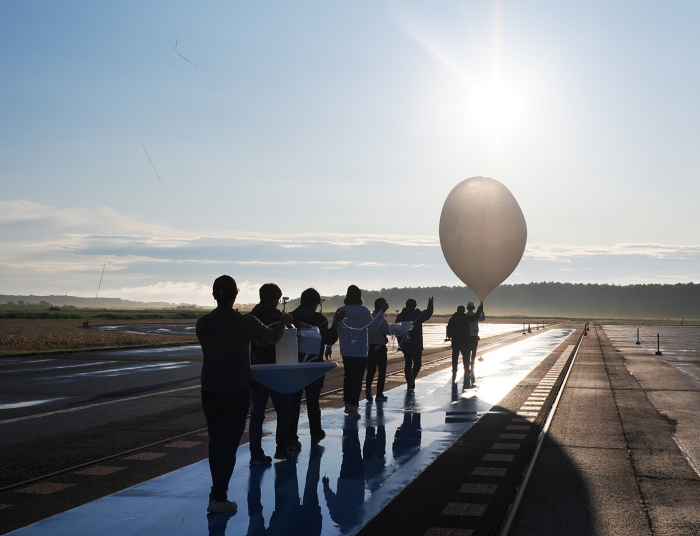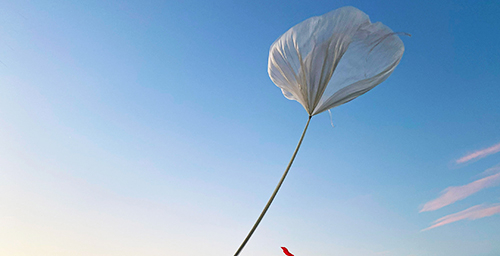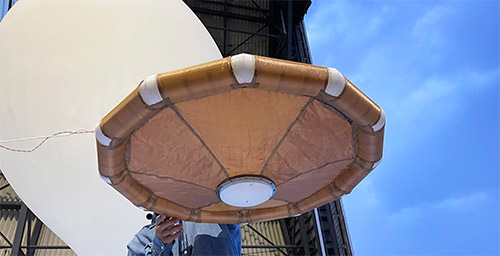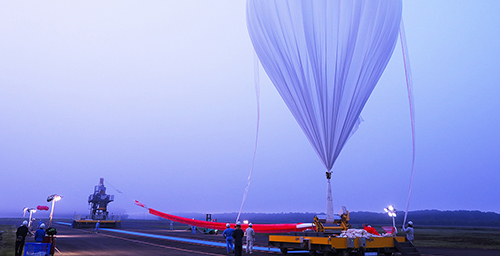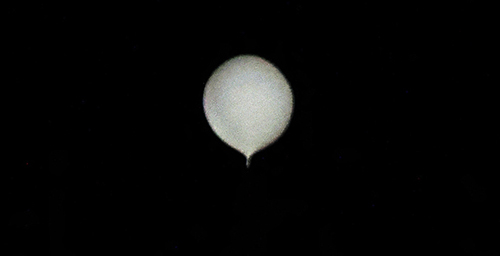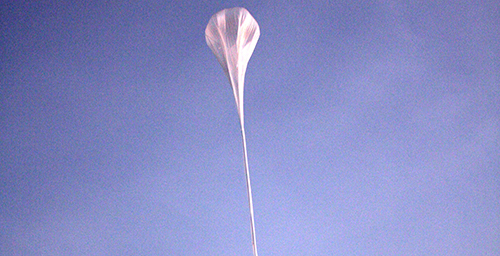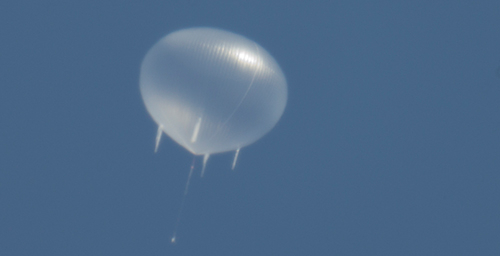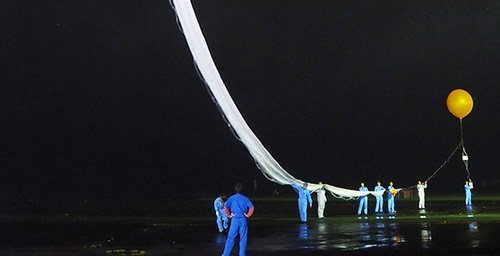The Japan Aerospace Exploration Agency (JAXA) conducted the scientific balloon flight BS25-03, as part of the 2025 scientific balloon campaign at the Taiki Aerospace Research Field. The balloon was launched on 12 June 2025, at 5:01 JST for the purpose of testing the performance of a model of reentry capsule with rigid aerodecelerator. The balloon was a rubber balloon with a maximum inflated diameter of 11m, and ascended at a rate of approximately 350 m per minute.
1 hours and 21 minutes after launch, the balloon reached its highest altitude of 28 km over the Pacific Ocean, approximately 80 km east from the Taiki Aerospace Research Field. The balloon and the onboard equipment slowly descended onto the sea, landing approximately 130 km east from the Taiki Aerospace Research Field.
Regarding the rubber balloon experiment for reentry capsule with rigid aerodecelerator, further research will now be conducted through the thorough analysis of the data obtained in this flight.
At the time of launch, the ground weather conditions were: weather: sunny, wind speed: 1 m/s, and temperature: 15 degrees Celsius.
※ Research overview
Atmospheric entry capsule with a thin-shell aerodecelerator is a promising technology for both future sample return missions from deep space, and entry into planetary atmospheres. The capsule has an advantage in its low ballistic coefficient flight enabled by the lightweight and large-area aerodecelerator system, which results in efficient aerodynamic deceleration at high altitudes, with the effect of reducing the aerodynamic heating. In addition, the capsule provides a parachute-free system that can descend to the ground at a low terminal speed. To realize this new type of capsule, it is necessary to understand its dynamic attitude stability at low speeds. Free-flight testing is essential as a method complementary to both wind tunnel experiments and numerical analysis approaches. Aerodynamic characteristics and attitude behavior data for the capsule were obtained in four free-flight tests using balloons conducted since 2022. Based on these achievements, two flights will be conducted in this balloon campaign. One will test a capsule with a rigid aerodecelerator and modified mass properties. The other is a test of a capsule with a flexible aerodecelerator as a comparison to the rigid type. Through these flights, the impact of various design parameters on the capsule characteristics will be evaluated.
The rubber balloon BS25-03 filled with helium gas (the white balloon in the back right of the center of the photo) and the reentry capsule with rigid aerodecelerator (the cone-shaped object in the left foreground in the center of the photo) (credit: JAXA)
Ascending rubber balloon BS25-03 and the reentry capsule with rigid aerodecelerator (credit: JAXA)

